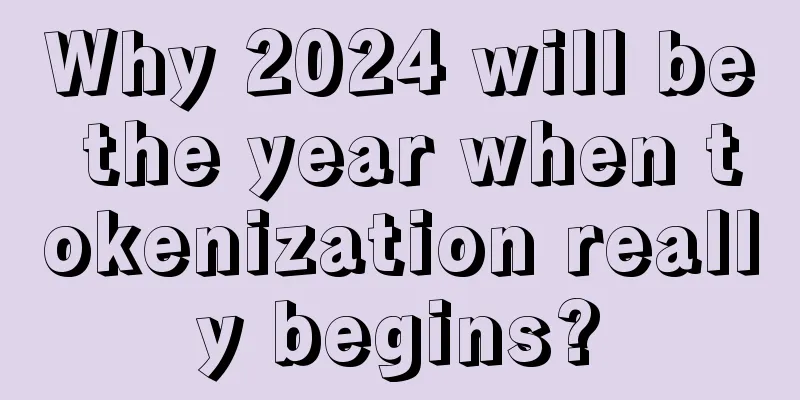Why 2024 will be the year when tokenization really begins?

|
Everyone from TradFi leaders to crypto experts predicts the tokenization opportunity is in the tens of trillions. While we’ve seen some compelling use cases, these are just a drop in the ocean compared to the vast amount of digitized assets that could be transferred on-chain in the coming years. When will today’s trickle of tokenization become a torrent? And what’s holding it back? In October, Forbes delved into this issue with the headline “ Why Tokenization Failed .” The author, Steven Ehrlich, director of research at Digital Assets, provided a list of failed or mediocre digital projects and concluded that the problem hindering adoption was not technology, but trust. I beg to differ. The main reasons why the tokenization market has not exploded are technical bottlenecks, limitations of current infrastructure and interoperability - an inevitable fact in a young, nascent field. However, the last year has seen incredible progress in overcoming these issues. While it’s easy to show projects that don’t deliver, the real story of tokenization in 2023 is laying the foundation for the next wave of tangible on-chain outcomes, driven by the power of major financial players entering the market. Private equity and credit lead the wayTalk to anyone familiar with the tokenized ecosystem and they will tell you that 2024 holds a lot of promise. First, we are seeing private equity funds take a keen interest in developing new tokenized instruments for their investors, and even further, rushing these ideas into production. This trend will continue into the new year as TradFi giants such as Hamilton Lane and JP Morgan develop tokenized funds. It is inevitable that we will soon see the development of more structured instruments, including assets built from new revenue sources such as private credit - this is a logical next step for financial products that are inherently digital and relatively easy to migrate on-chain. Inevitable expansion to other assetsThese tools are just the beginning, though. The next generation of tokenized assets will include products like bonds and stocks. Over time, real-world assets like art, cars, commodities, and fine wine will be traded on-chain. In fact, this is already happening, with use cases including fractional ownership of classic artworks. Tokenized real estate, in particular, could be a major boon to traditionally complex and slow-moving markets, which will not only now become digitally native but also benefit from fractional ownership and near-instant settlement, among other things. This will make investing easier and bring new liquidity to ossified markets. A new generation of investors will begin to exploit the possibilities of tokenization and breathe new life into traditional markets. New institutions and assets will bring new payment rails, and the need for industry-wide standards that make all these products and markets interoperable. By 2024, we can be reasonably confident that a new wave of tokenization will have grown from a trickle to a torrent, marking the most profound revolution in financial affairs in centuries. |
<<: How did legendary investor Charlie Munger view cryptocurrency and AI before his death?
>>: Bitcoin's Path to $100,000: Why It's Very Possible in 2 Years
Recommend
Exclusive first release on CoinWise: Jinbei HS1 mining machine review
Since the BTC halving, the mining machine revenue...
Analysis of women’s eyebrow fortune: What are the effects of different eyebrows?
Other people's eyebrows are very obedient, eac...
R3 Corda’s statement that “blockchain is not needed” is surprising. Is the private chain reaching a dead end?
Throughout 2016, there was a lot of hype surround...
What does the Ju Men in the Fude Palace represent?
Ju Men is two of the Big Dipper stars. It belongs...
Is it true that a person with no hair on his lips cannot do anything?
As the saying goes: A man without a beard on his ...
How to tell the shape of a boy's eyebrows? Analysis of a boy's eyebrow shape
In physiognomy, for a man, good eyebrows can add ...
Palmistry to see if you have any unexpected disasters
Palmistry to see if you have any unexpected disas...
Did you know? These 5 fintech companies may shape the future of money
As 2016 approaches, and Bitcoin production is set...
What are the characteristics of people who are followed by spirits?
People who are followed by gods are generally mor...
What's wrong with the red eyebrows?
Yintang is a term in physiognomy, usually referri...
A plump figure is a sign of good fortune
In this age where slimness is considered beautifu...
What does a woman's left hand with a broken palm mean? Palmistry analysis of a woman's left hand with a broken palm
There is an old saying that men wear palms on the...
What are the characteristics of a bad woman? What are the facial features of a person with a strong sense of revenge?
As the saying goes, "Appearance reflects the ...
Fidelity's major report: Will Ethereum become deflationary?
While users gain technical utility from the Ether...
Financial giant Stone Ridge announced that it had purchased 10,000 bitcoins. Is the future of Bitcoin being controlled by institutions?
Stone Ridge’s cryptocurrency subsidiary New York ...









